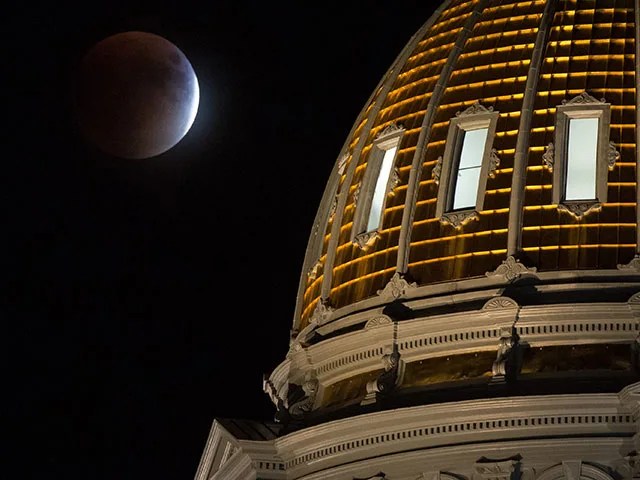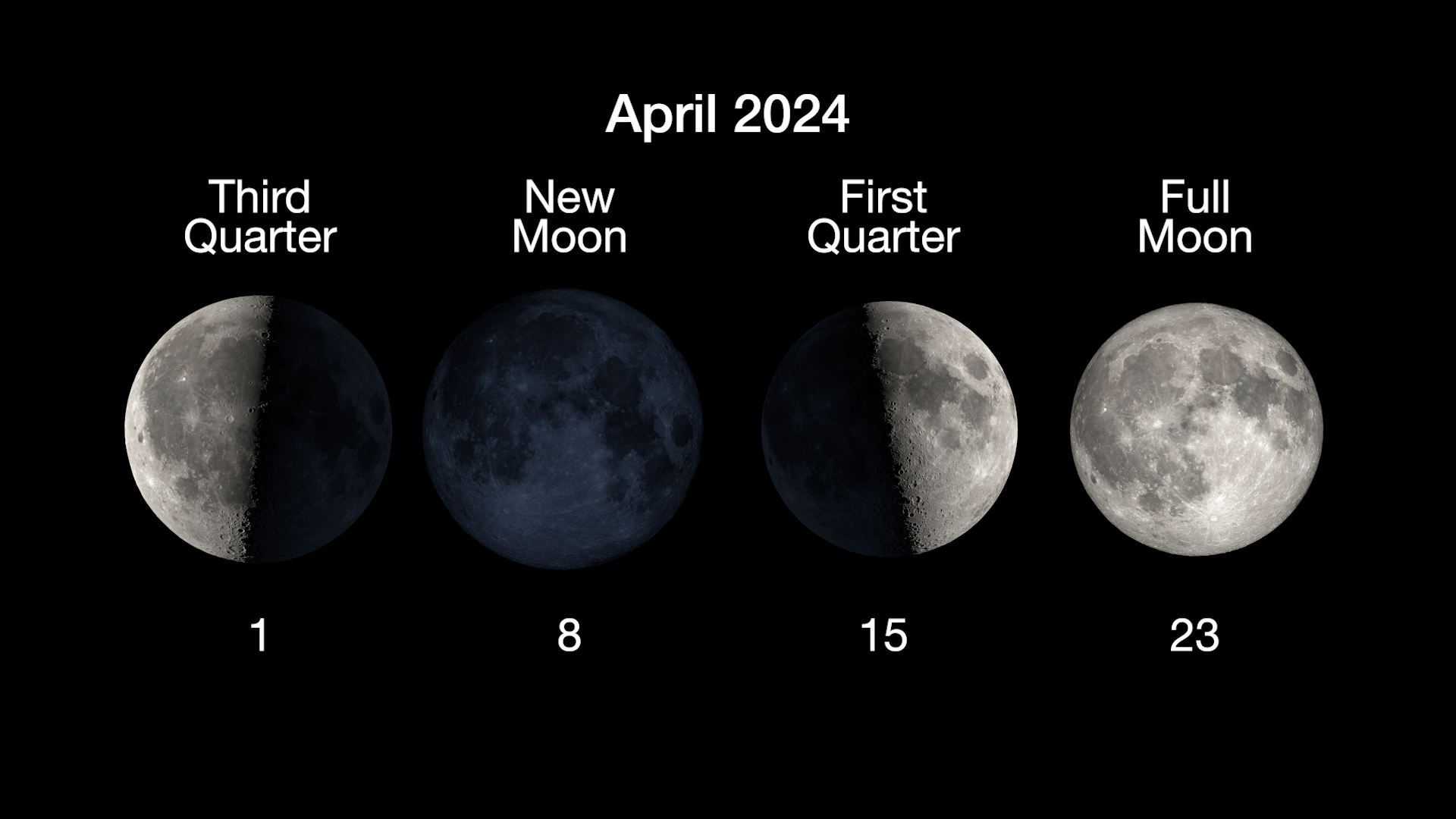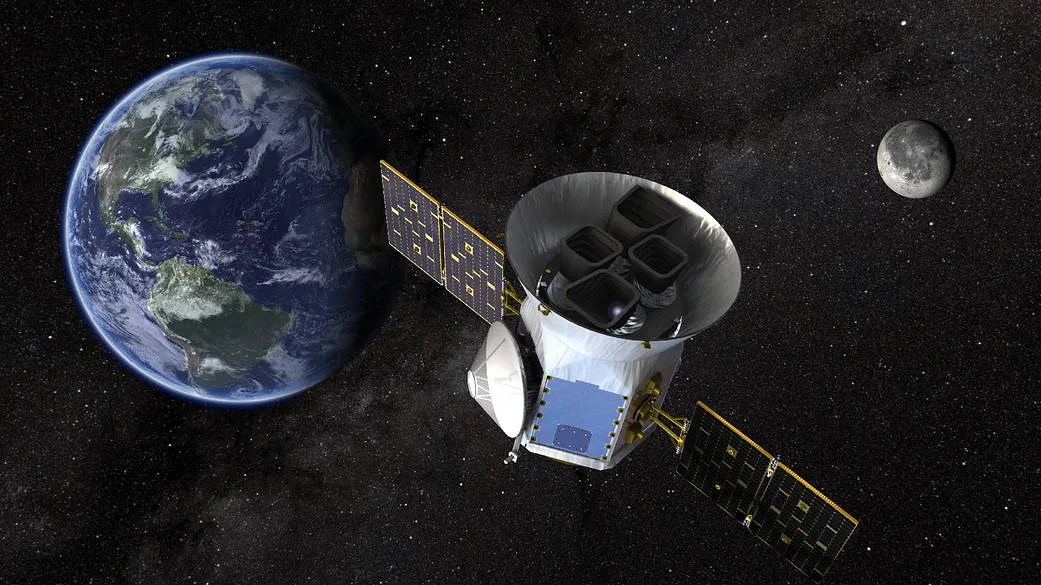20 min read
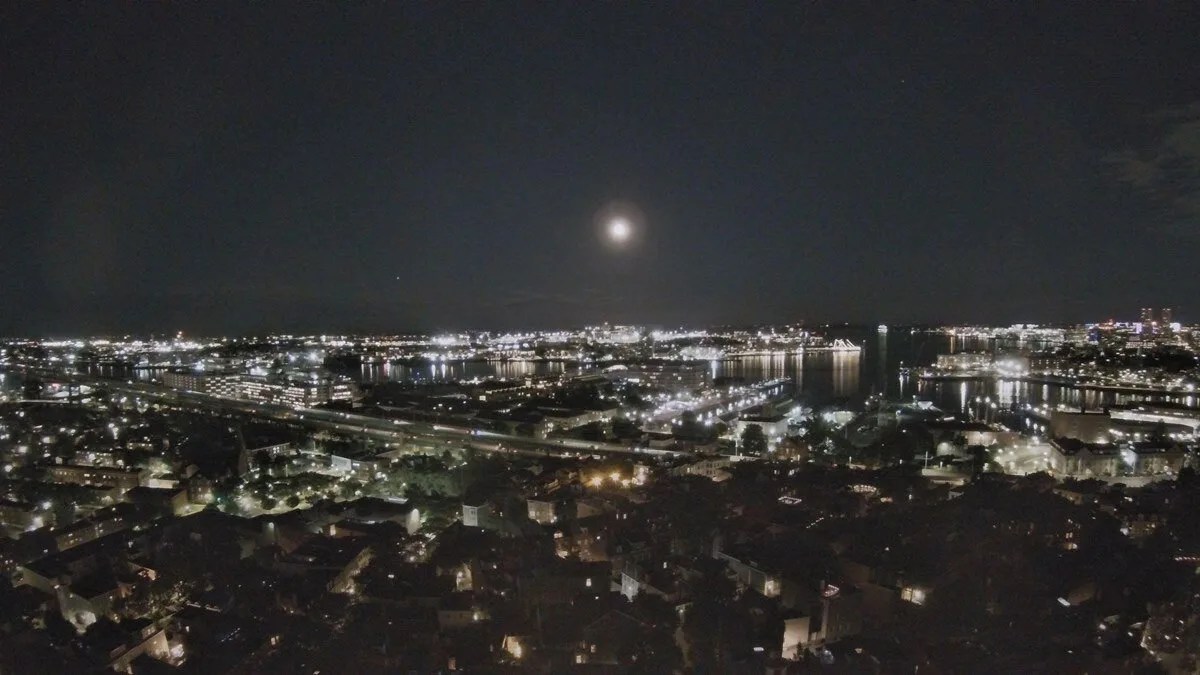
The Next Full Moon is the Beaver, Frost, Frosty, or Snow Moon; Kartik Purnima; the Karthika Deepam, Karthikai Vilakkidu, or Thrikarthika Festival Moon; the Loi Krathong Festival Moon; the Bon Om Touk ("Boat Racing Festival") or Cambodian Water Festival Moon; the Tazaungdaing Festival Moon; and Ill (or Il) Poya.
The next full Moon will be Tuesday morning, November 8, 2022, appearing opposite the Sun in Earth-based longitude at 6:02 AM EST.
While this will be on Tuesday for most of the Earth, it will be late on Monday night for the International Date Line West Time Zone and early Wednesday morning from the New Zealand Time Zone eastward to the International Date Line. The Moon will be close enough to opposite the Earth from the Sun that it will pass through the Earth's shadow in a total lunar eclipse. The Moon will appear full for about 3 days around the eclipse, from Sunday evening to Wednesday morning.
The Maine Farmers' Almanac began publishing "Indian" names for full Moons in the 1930s. Over time these names have become widely known and used. According to this almanac, as the full Moon in November this is the Beaver Moon, the Frost or Frosty Moon, or the Snow Moon. For the Beaver Moon, one interpretation is that mid-Fall was the time to set beaver traps before the swamps freeze to ensure a supply of warm winter furs. Another interpretation suggests that the name Beaver Moon came from how active the beavers are in this season as they prepare for winter. The Frost, Frosty, or Snow Moon names come from the frosts and early snows that begin this time of year, particularly in northeastern North America.
Throughout Southeast Asia numerous related festivals are celebrated around this full Moon. This is Kartik Purnima (the full Moon of the Hindu lunar month of Kartik) and is celebrated by Hindus, Jains, and Sikhs (each for different reasons). See https://en.wikipedia.org/wiki/Kartik_Purnima for more information. Karthika Deepam, also known as Karthikai Vilakkidu or Thrikarthika, is a festival observed by Hindus of Tamil Nadu, Sri Lanka, and Kerala when the nearly full Moon lines up with the Pleiades constellation (Krittika or Karttikai). This year it will be on Sunday, November 6, 2022. Some areas celebrate multi-day festivals that include this full Moon.
In Thailand and nearby countries this full Moon is the Loi Krathong festival, which includes decorating baskets and floating them on a river, see https://en.wikipedia.org/wiki/Loi_Krathong for more information. In Cambodia this full Moon corresponds with the 3-day Bon Om Touk ("Boat Racing Festival") or the Cambodian Water Festival featuring dragon boat races. In Myanmar this is the Tazaungdaing Festival, a festival that predates the introduction of Buddhism and includes the launching of hot air balloons (sometimes flaming or laden with fireworks). In Sri Lanka this is Ill (or Il) Poya, commemorating the Buddha's ordination of sixty disciples as the first Buddhist missionaries.
In many lunar and lunisolar calendars the months change with the new Moon and full Moons fall near the middle of the lunar months. This full Moon is near the middle of the tenth month of the Chinese calendar; Marcheshvan in the Hebrew calendar, a name often shortened to Cheshvan or Heshvan; and Rabiʽ al-Thani, also known as Rabiʽ al-Akhir, the fourth month of the Islamic calendar.
As usual, the wearing of suitably celebratory celestial attire is encouraged in honor of the full Moon.
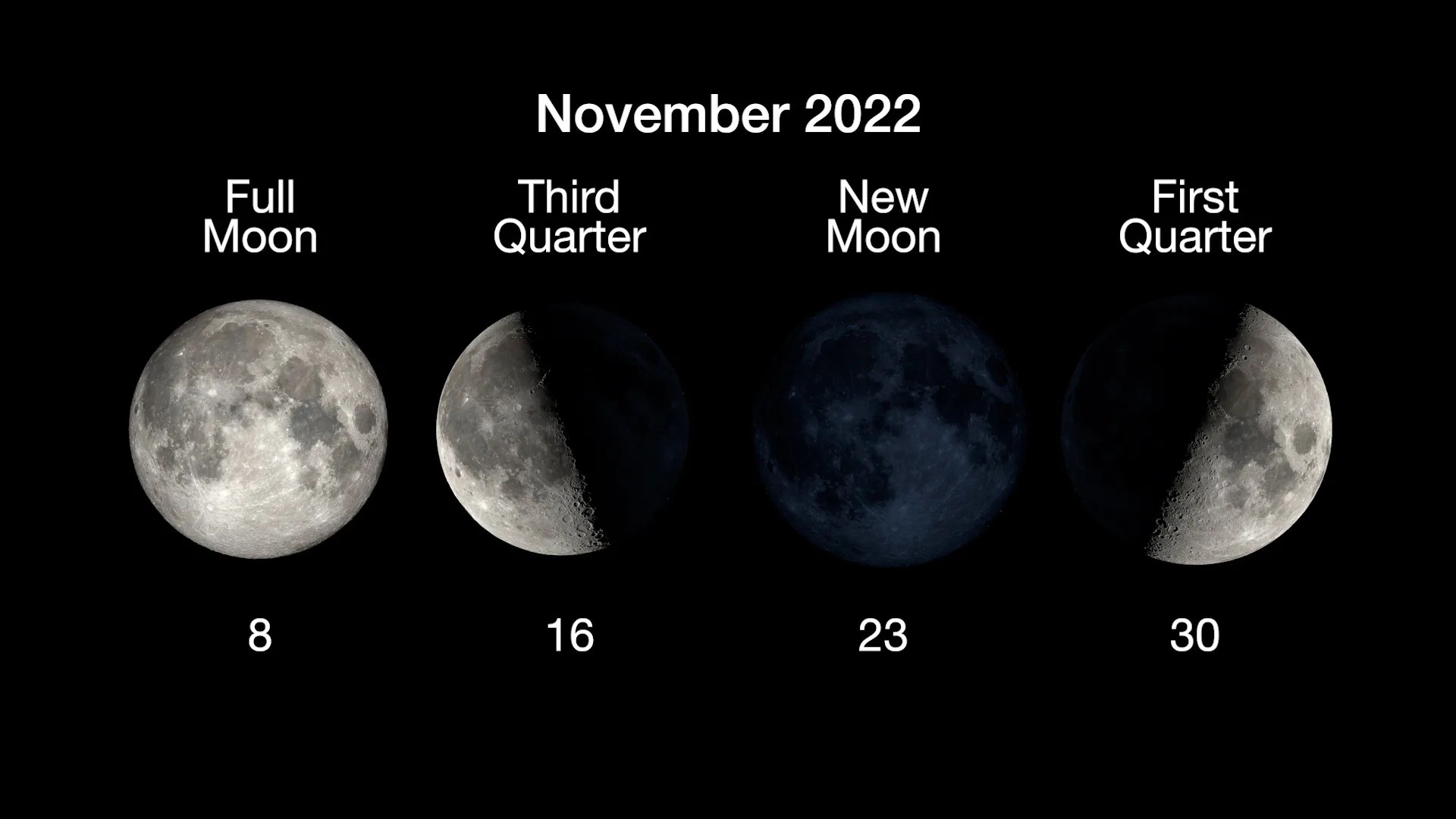
As for other celestial events between now and the full Moon after next (with times and angles based on the location of NASA Headquarters in Washington, DC):
As autumn continues the daily periods of sunlight continue to shorten. On Tuesday, November 8 (the day of the full Moon), morning twilight will begin at 5:43 AM EST, sunrise will be at 6:43 AM, solar noon will be at 11:51:45 AM when the Sun will reach its maximum altitude of 34.44 degrees, sunset will be at 5:00 PM, and evening twilight will end at 6:00 PM.
Our 24 hour clock is based on the average length of the solar day. Although the day of the winter solstice on December 21, 2022, is sometimes called the "shortest day of the year" (because it has the shortest period of sunlight) the solar days near the solstice are actually the longest days of the year, longer that 24 hours. Because of this, the earliest sunset of the year occurs before the solstice and the latest sunrise of the year (ignoring Daylight Savings Time) occurs after the solstice. This year, the earliest sunset of the year will occur on Wednesday, December 7 (the day of the full Moon after next). On this day, morning twilight will begin at 6:10 AM EST, sunrise will be at 7:13 AM, solar noon will be at 11:59:36 PM when the Sun will reach its maximum altitude of 28.49 degrees, sunset will be at 4:45:50 PM, and evening twilight will end at 5:49 PM.
Several meteor showers are expected to peak during this lunar cycle, but they are not expected to produce many visible meteors and moonlight will interfere (especially for those of us in urban areas with light pollution). Per the International Meteor Organization's 2022 Meteor Shower Calendar, there is a chance that the Northern Taurid Shower might produce infrequent but bright fireballs in early November. In addition, some models predict a chance of higher meteor rates from the Leonid Shower on November 18 or 19, but there is a lot of uncertainty in these predictions. I wouldn't plan a special trip, but if you happen to be out late at night in early to mid November and the sky is clear, look up!
This should be a great time for planet watching in the evenings. Saturn was at its closest and brightest for the year in August 2022, while Jupiter was at its closest and brightest in September. Both will appear to shift westward each evening, making them higher in the sky, easier to see, and friendlier for backyard stargazing (especially if you have young ones with earlier bedtimes). Mars will join Jupiter and Saturn in the evening sky later in November. With clear skies and a telescope you should be able to see Jupiter's four bright moons, Ganymede, Callisto, Europa, and Io, noticeably shifting positions in the course of an evening. For Saturn, you should be able to see Saturn's rings as well as Saturn's largest moon, Titan. In addition, the planet Uranus, only visible through a telescope, could also be an interesting object to look for. It will be at its closest and brightest on the morning of November 9.
On the evening of Tuesday, November 8, 2022 (the day of the full Moon), as evening twilight ends (at 6 PM EST), the rising Moon will be 8 degrees above the east-northeastern horizon. The bright planet Jupiter will appear 33 degrees above the southeastern horizon. The planet Saturn will appear 34 degrees above the southern horizon. The bright star appearing closest to overhead will be Deneb at 82 degrees above the north-northwestern horizon. Deneb is about 2,600 light years from Earth and is the 19th brightest star in our night sky.
As the lunar cycle progresses, Jupiter, Saturn, and the background of stars will appear to shift westward each evening (as the Earth moves around the Sun). Beginning November 23, the bright planet Mars will begin rising above the east-northeastern horizon before evening twilight ends, joining Jupiter and Saturn in the evening sky. Mars will reach its closest and brightest for the year on the night of the full Moon after next. In late November the planets Mercury and Mars may begin to emerge from the glow of dusk about 30 minutes after sunset, but they will be low on the west-southwestern horizon and difficult to see. The waxing Moon will pass near the planet Saturn on November 28, the bright planet Jupiter on December 1, and the Pleiades start cluster on December 6.
By the evening of Wednesday, December 7 (the day of the full Moon after next), as evening twilight ends (at 5:49 PM EST), the rising Moon will be 15 degrees above the east-northeastern horizon. Mars will appear about 4 degrees to the lower left of the full Moon and will be at its closest and brightest for the year. Later in the evening the Moon will shift very close to Mars (for the Washington, DC area) and for areas farther north or west the Moon will actually block Mars from view. Jupiter will appear 46 degrees above the south-southeastern horizon and Saturn will appear 32 degrees above the south-southwestern horizon. Mercury and Venus will still be setting before evening twilight ends but may be visible low on the west-southwestern horizon about 30 minutes after sunset. The bright star appearing closest to overhead will be Deneb at 66 degrees above the west-northwestern horizon.
For the Washington, DC area (and similar longitudes) on the morning of Tuesday, November 8, 2022 (the day of the full Moon), as morning twilight begins (at 5:43 AM EST), the Moon will appear a dull reddish brown about 11 degrees above the west-northwestern horizon, as it will be in the shadow of the Earth in a total lunar eclipse. The planet Mars will appear 48 degrees above the western horizon. The bright star appearing closest to overhead will be Pollux at 74 degrees above the southwestern horizon. Pollux is the brighter of the twins in the constellation Gemini and is about 34 light-years from us.
For the total lunar eclipse, the Moon will start entering the partial shadow of the Earth at 3:02 AM EST, but its slight darkening will be hard to detect. At 4:09 AM the full shadow will begin falling on the Moon. You can watch the curved shadow from the round Earth move across the Moon until the Moon is fully shadowed at 5:17 AM. For the Washington, DC area, morning twilight will begin at 5:43 AM. The deepest point of the eclipse will be at 5:59 AM. The Moon will begin emerging from the full shadow of the Earth at 6:42 AM. For the DC area sunrise will be at 6:43 AM and moonset at 6:50 AM. If you can find a place to stand with the light of the rising Sun on your back and a view of the Moon before you, you will be casting your shadow on the Moon! From more western time zones you should be able to see more of the Moon emerge from shadow before moonset.
As the lunar cycle progresses, the background of stars along with Mars will appear to shift westward each morning. The waning Moon will pass near the bright star Aldebaran on November 10, the bright planet Mars on November 11, the bright stars Pollux on November 13, Regulus on November 17, and Spica on November 21.
By the morning of Wednesday, December 7 (the day of the full Moon after next), as morning twilight begins (at 6:10 AM EST), the full Moon will appear 5 degrees above the west-northwestern horizon with the planet Mars nearby at 14 degrees above the horizon. The bright star appearing closest to overhead will be Regulus at 60 degrees above the south-southwestern horizon. Regulus appears to us as one star (the 21st brightest star in our sky), but is actually two pairs of stars orbiting each other for a total of 4 stars. Regulus is 79 light-years from us.
Here for your reference is a day-by-day listing of celestial events between now and the full Moon after next. The times and angles are based on the location of NASA Headquarters in Washington, DC, so some of these details may differ for your location. I use parentheses to indicate specific times that might be different for you.
On Friday evening into Saturday morning, November 4 to 5, 2022, the bright planet Jupiter will appear near the waxing gibbous Moon. Evening twilight on Friday will end (at 7:04 PM EDT) with Jupiter 3 degrees above the Moon. The Moon will reach its highest in the sky for the night a little over 3 hours later (at 10:23 PM) with Jupiter 4 degrees to the upper right of the Moon. Jupiter will set first on the western horizon less than 6 hours later on Saturday morning (at 4:08 AM), 6 degrees to the lower right of the Moon.
Don't forget, Daylight Savings Time ends and Standard Time begins overnight from Saturday into Sunday, November 5 to 6, 2022. Early Sunday morning we "fall back" from 1:59 AM EDT to 1 AM EST, gaining an hour of sleep. You will need to reset any clocks that don't reset themselves!
As mentioned above, the next full Moon will be on Tuesday morning, November 8, 2022, at 6:02 AM EST (note the change from EDT to EST). The Moon will be close enough to opposite the Earth from the Sun that it will pass through the Earth's shadow, a total lunar eclipse. The Moon will appear full for about 3 days around the eclipse, from Sunday evening to Wednesday morning. For more information on this total eclipse of the Moon, see the morning highlights summary earlier in this posting.
On Tuesday, November 8, 2022, the planet Mercury will be passing on the far side of the Sun as seen from the Earth, called superior conjunction. Because Mercury orbits inside of the orbit of Earth, it will be shifting from the morning sky to the evening sky and will begin emerging from the glow of the dusk on the western horizon in late November (depending upon viewing conditions).
Tuesday night into Wednesday morning, November 8 to 9, 2022, the Pleiades star cluster will appear near the full Moon. As evening twilight ends on Tuesday (at 6 PM EST) the Moon will be 8 degrees above the east-northeastern horizon with the Pleiades 9 degrees to the left. The Moon will reach its highest in the sky for the night early Wednesday morning (at 12:27 AM) with the Pleiades 6 degrees to the upper left. The Pleiades will be to the upper right of the Moon as morning twilight begins (at 5:44 AM).
Although you will need a telescope to see it, the planet Uranus will appear at its closest and brightest for the year on Wednesday morning, November 9, 2022.
Wednesday night, November 9, 2022, the waning gibbous Moon will have shifted past the Pleiades star cluster. As evening twilight on Wednesday ends (at 5:59 PM EST) the Moon will be 2 degrees above the east-northeastern horizon with the Pleiades about 6 degrees above the Moon. The pair will separate as the evening progresses.
On Thursday morning, November 10, 2022, the bright star Aldebaran will appear 8 degrees to the lower left of the waning gibbous Moon as morning twilight begins (at 5:45 AM EST).
On Thursday night into Friday morning, November 10 to 11, 2022, the bright planet Mars will appear near the waning gibbous Moon. Mars will rise above the east-northeastern horizon (at 6:55 PM EST) appearing to the lower left of the Moon. By the time the Moon reaches its highest in the sky for the night on Friday morning (at 2:08 AM) Mars will appear about 5 degrees to the lower left of the Moon. Mars will appear about 3 degrees to the upper left of the Moon as morning twilight begins (at 5:46 AM).
By Friday night, November 11, 2022, the waning gibbous Moon will have shifted past the bright planet Mars. When the Moon rises above the northeastern horizon (at 7:05 PM EST) Mars will appear about 7 degrees to the upper right of the Moon. The pair will separate as the evening progresses.
On Sunday evening into Monday morning, November 13 to 14, 2022, the bright star Pollux will appear above the waning gibbous Moon. Pollux will be about 4 degrees above the Moon at moonrise on the northeastern horizon (at 8:53 PM EST). The Moon will reach its highest in the sky for the night Monday morning (at 4:41 AM) with Pollux about 6 degrees to the upper right. Morning twilight will begin about an hour later (at 5:49 AM).
Early Monday morning, November 14, 2022, at 1:41 AM EST, the Moon will be at apogee, its farthest from the Earth for this orbit.
Wednesday morning, November 16, 2022, the waning Moon will appear half-full as it reaches its last quarter at 8:27 AM EST.
Thursday morning, November 17, 2022, the bright star Regulus will appear to the upper right of the waning crescent Moon. The Moon will rise above the east-northeastern horizon around midnight (Wednesday night at 11:55 PM EST) with Regulus about 6 degrees from the Moon. Morning twilight will begin about 6 hours later (Thursday morning at 5:52 AM) with Regulus about 7 degrees from the Moon.
The Leonid Meteor shower, caused by debris from the comet 55P/Tempel-Tuttle, is expected to peak on Thursday, November 17, 2022. Under ideal conditions this meteor shower is expected to produce 10 to 15 meteors per hour, but this year moonlight will make these meteors difficult to see. However, some model calculations indicate that the Earth might pass through a stream of debris that this comet gave off in 1733. If this happens, this might produce a larger meteor shower on Saturday, November 19. The odds are low, but if your out and the sky is clear, look up!
Monday morning, November 21, 2022, the bright star Spica will appear about 5 degrees to the upper right of the thin, waning crescent Moon. The Moon will rise above the eastern horizon (at 4:11 AM EST) about 1 hour 45 minutes before morning twilight begins (at 5:56 AM).
Wednesday evening, November 23, 2022, will be the first evening that Mars will appear above the east-northeastern horizon as evening twilight ends (at 5:51 PM EST). Also on Wednesday evening at 5:57 PM EST will be the new Moon, when the Moon passes between the Earth and the Sun and will not be visible from the Earth.
The day of or the day after the New Moon marks the start of the new month in some lunisolar calendars. The eleventh month of the Chinese calendar starts on Thursday, November 24, 2022 (at midnight in China's time zone, which is 13 hours ahead of EST). Sundown on Thursday, November 24, marks the start of Kislev in the Hebrew calendar. Hanukkah will begin towards the end of Kislev.
In the Islamic calendar the months traditionally start with the first sighting of the waxing crescent Moon. Many Muslim communities now follow the Umm al-Qura Calendar of Saudi Arabia, which uses astronomical calculations to start months in a more predictable way. Using this calendar, sundown on Thursday evening, November 24, 2022, will probably mark the beginning of Jumada al-awwal (also known as Jumada al-Ula).
If you use binoculars or a telescope and have a very clear view of the west-southwestern horizon, you might be able to see the very thin waxing crescent Moon and the planets Venus and Mercury low on the horizon. Mercury will set about 24 minutes after sunset (at 5:13 PM EST), Venus will set 3 minutes later (at 5:16 PM) and the Moon will set 2 minutes after that (at 5:18 PM).
Friday evening, November 25, 2022, at 8:32 PM EST, the Moon will be at perigee, its closest to the Earth for this orbit.
Monday evening, November 28, 2022, will be the first evening that the planets Venus and Mercury will appear barely above the horizon 30 minutes after sunset, a very rough estimate of when they might start being visible in the glow of dusk without the aid of a telescope or binoculars.
Also on Monday evening, November 28, 2022, the planet Saturn will appear above the waxing crescent Moon. The Moon will appear 27 degrees above the south-southwestern horizon as evening twilight ends (at 5:49 PM EST) with Saturn about 8 degrees above the Moon. The Moon will set first below the west-southwestern horizon about 4 hours later (at 9:51 PM) with Saturn about 6 degrees to the upper right of the Moon.
On Wednesday morning, November 30, 2022, the Moon will appear half-full as it reaches its first quarter at 9:37 AM EST.
On Thursday evening into early Friday morning, December 1 to 2, 2022, the bright planet Jupiter will appear above the waxing gibbous Moon. The Moon will appear 41 degrees above the south-southeastern horizon as evening twilight ends (at 5:49 PM EST) with Jupiter about 5 degrees to the upper left. The Moon will reach its highest in the sky for the night about 90 minutes later (at 7:22 PM)with Jupiter above the Moon. By the time Jupiter sets first below the western horizon about 6 hours later (early Friday morning at 1:19 AM) Jupiter will appear about 3 degrees to the right of the Moon.
On Tuesday night into Wednesday morning, December 6 to 7, 2022, the Pleiades star cluster will appear near the waxing gibbous Moon. The Pleiades will appear about 4 degrees above the Moon as evening twilight ends (at 5:49 PM EST). By the time the Moon reaches its highest in the sky for the night about 5 hours 30 minutes later (at 11:10 PM) the Pleiades will appear about 4 degrees to the right of the Moon. By the time morning twilight begins Wednesday morning (at 6:10 AM) the Pleiades will be close to setting below the west-northwestern horizon and the bright Star Aldebaran will appear about 8 degrees to the left of the Moon.
Four celestial events will be happening on Wednesday night into Thursday morning, December 7 to 8, 2022. These are: the earliest sunset of the year, the full Moon, the opposition of Mars, and (depending upon your location) either an unusually close pairing of the Moon and Mars or an actual occultation of Mars by the Moon. Sunset on Wednesday, December 7, will be the earliest sunset of the year (at 4:45:50 PM EST). Evening twilight will end at 5:49 PM. The full Moon after next will be Wednesday night at 11:08 PM EST. Wednesday night into Thursday morning will be the night when the planet Mars will appear at its brightest and closest to Earth for the year, as it will be opposite the Sun as seen from the Earth just after midnight on Thursday morning, effectively a "full Mars."
For the Washington, DC area, as evening twilight ends (at 5:49 PM) the bright planet Mars will appear about 3 degrees to the lower left of the Moon. Over the course of Wednesday evening the Moon will shift closer to Mars until they appear to almost touch at about 10:45 PM, after which the pair will separate. For much of the USA and Canada north and west of the Washington, DC area, the Moon will actually block Mars from view in what is called an occultation. See https://in-the-sky.org/news.php?id=20221208_16_100 for a map of the regions across North America, parts of Europe, and even a sliver of northwestern Africa where the Moon will occult Mars. By the time morning twilight begins on Thursday morning (at 6:11 AM), Mars will appear about 6 degrees to the lower right of the full Moon. The Moon will appear full for about 3 days around the full Moon, from Tuesday night into Friday morning.
The Leonids will battle against moonlight this year, but anyone with a view of the Moon in the a.m. on Nov. 8 can enjoy a lunar eclipse.
- November 8 – Full moon
- November 8 – Total lunar eclipse in the hours before sunrise
- November 11 – The Moon appears directly between Mars and bright blue-white star Elnath in the west before sunrise
- November 20 – In the hour before sunrise, find the crescent Moon above bright star Spica in the southeast
- November 18 – Look straight overhead for Leonid meteors after midnight. The Moon is about 35% full, and will diminish the fainter meteors.
- November 23 – New moon
- November 28 – The crescent Moon hangs beneath Saturn in the southwest after sunset All month – The Leonid meteor shower is active throughout November, and peaks between midnight and dawn on the 18th.

